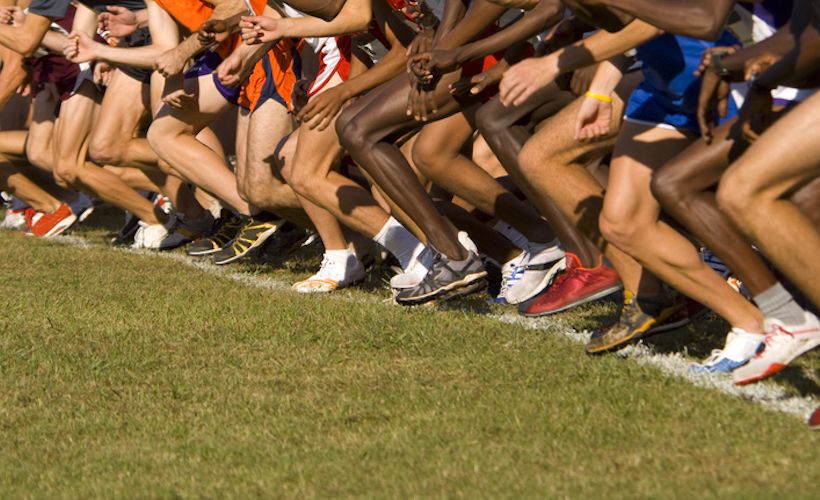Breaking Down The NCAA Divisions

The NCAA Divisions
When you’re looking at results from a road race, it’s pretty straightforward. There’s male winner and a female winner. Aside from those stats, you can also see where you rank within your specific age group. Not all rankings, though, are that linear.
Take, for instance, collegiate cross country. Declaring that a specific runner or team is “the best” is more difficult than just seeing who won the championship race. That is because there are multiple divisions and classes within the system. While Division I schools typically produce the fastest athletes, the differences between the other divisions get hazy. Maybe you’re looking to run in college. Maybe you’re an avid spectator. Either way, it’s important to know what those acronyms actually mean.
NCAA Division I (DI)
To be crowned the National Collegiate Athletic Association (NCAA) Division I National Champion is, in effect, to secure the title as the fastest collegiate runner. Why? Because DI schools are designated as the universities that have the highest level of competition and resources. Think Texas A&M, Ohio State or University of Oregon. These schools have top-notch facilities and the funds to recruit the highest level of athletes to use them.
NCAA Division II (DII)
Division II is like the stereotypical middle child—valuable, but often neglected. While it doesn’t have the quantity of scholarship money that DI offers, DII provides a more competitive atmosphere for runners whose talent might have been swallowed up and overlooked by a DI program. Don’t look down on DII runners, though. A smaller program can equate to more individualized attention, which has led to great success for many runners.
NCAA Division III (DIII)
Division III schools are the smallest, and for many runners, that’s exactly what makes them desirable. DIII schools do not offer athletic scholarship at all, but they do offer a more relaxed atmosphere that generally does not have the travel and time requirements of a DI program. The competition is more suited for runners who were local stars in high school but weren’t necessarily on the podium at the state meet. That being said, there are quality runners who opt for a DIII school and have great success. There, they have the opportunity to become their best and a national contender, rather than racing in the middle or back-of-the-pack in DI.
NAIA
The National Association of Intercollegiate Athletics (NAIA) is an entirely different class than the NCAA. While you won’t find NAIA in a primetime TV spot—but, then again, how often does running get primetime, anyway—the institution prides itself in providing a balanced but challenging athletic experience for students. Competitively, it is often compared to NCAA DII. However, the philosophy is very different and there are fewer schools competing for the NAIA National Championship.
NJCAA
While the NCAA and NAIA schools are traditional, four-year universities or colleges, the National Junior College Athletic Association (NJCAA) classification is reserved for two-year colleges. Often called community colleges, these schools don’t have the luxury of four years with an athlete, but they do offer a chance to compete to runners who wouldn’t make the cut in DI or even DII. The other benefit to NJCAA schools is that they are much less expensive than large universities. That gives a student athlete the opportunity to train, achieve modest success and then transfer to a larger NCAA or NAIA school for the remainder of their studies.
Yes, the life of a DI athlete is night and day compared to that of a NJCAA athlete. But that doesn’t mean either option is more or less valid. The reason that these different classes were created was to meet the needs of various athletes or various skill levels. The fact is, any athlete who wants to compete after high school will be putting time and energy into their sport. There’s no getting around it.
Related:
NCAA Cross-Country Breakdown: 2018’s Strongest Teams